Tiara 3600 Convertible
by David Pascoe
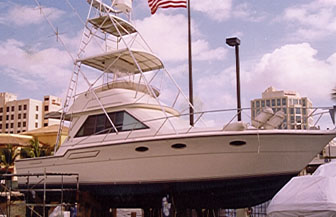
Brokers and dealers like to call used boats "pre owned," but we like the term "pre tested' much better. One of the really great advantages of buying a used boat is that it is, indeed, pre tested. By the time it is three years old, most boats have been used hard enough, and long enough, that any major problems will have manifested themselves by now. That's why you'll find these reviews to be so much more than just a review of any particular boat, for they will give you an insight into a wide range of boats.
This review is based on several 3600's we've looked at recently in the ten year old range, and all were heavily used in sport fishing and cruising, which gives us good insight into the products of S2 Yachts and how they hold up over the years. In a word, very well, for the Tiara 3600 is a high quality boat that stands the test of time. Good looking without a lot of eye candy, it has nice clean lines and the kind of styling that is nearly timeless, something a smart buyer looks for unless he doesn't mind getting caught up in style obsolescence, and the big loss in resale value that that entails.
Right from its first introduction, we've always been impressed with this boat, but we can also understand why it didn't sell as many copies as the builder surely had hoped. That great styling, like so many boats of yesteryear, means a smaller interior. For a 36 footer, the salon can only be described as cramped, making her a somewhat less than ideal cruising boat. The house is short and raked, with a large expanse of uncluttered fore deck. Many folks from other parts of the country do not consider that a convertible, or sport fisherman, could be used as a cruiser, but here in the Southland, we have a considerably different idea about that. Mainly because so many people like to go fishing AND cruising, so they look for both qualities.
Part of the problem is that the layout doesn't make the best use of space. The catwalks are really narrow, so you'd expect that the salon should be large, but the short house precludes that. Add to this the problem is that it is broken up with too much counter space. That's great for finding a place to set stuff down, but its not so good for moving around. Some folks just don't like constantly bumping into things, which is what you end up doing on this one.
That complaint aside, there's not much else to criticize. One boat had been used hard, and in recent years not well maintained. It hadn't been compounded and waxed in years, but when this was done shortly after the purchase, the gel coat came back beautifully and really took a shine. We also like the lack of feature stripe tape, decals and black painted trim and accents, which means that you don't get all the sun and heat expansion damage that is so prevalent on late model boats. No leaky windows, no damaged interior paneling, no cracked and faded plastics, no crummy die cast zinc alloy fittings falling apart, no wood, no teak or other cheap junk that can't be restored or replaced. Oh, yes, and no corroded aluminum trim either.
No stress cracks on the bottom, or around the rub rails or the corners of the cockpit or house sides. The decks are balsa cored, just like we think they should be. And yes, the core is doing just fine, adding to a more hushed ambiance inside. The rub rails are stainless on top of molded plastic which works very well.
How well is the hull built? In our view, about as well as all boats should be built. Its not heavy by any means. At 18,600 lbs. stripped, the weight is middlin, but the design parameters put the beef where its needed, and not where its not. There really isn't any place on this boat where you get the sense of flimsy glass. Unfortunately, the access to the internal hull is poor, so we really didn't get to see much of the detail work, but S2 has a good history of doin' it right.
The cockpit is adequate for anyone but a fishin' fool who's going to want to drop a full size tournament chair in there, at which point things cramp up a bit. The deck is good and solid with nicely designed gutters around the hatches that do a good job of keeping the water out, unless you blast it with a hose. It wisely had no bait and tackle center which would take up precious cockpit space. The bridge ladder is well out of the way, so there's no room behind it to squeeze in anything except an Igloo. And, surprisingly, there is even quite a bit of storage space in the lazarette, although you need to install your own decking back there, to keep stuff out of the bilge water, which Tiara did not do.
You'll find the bridge layout a nearly perfect meld of fishing function and a bit of party-time, for two pedestals fit well and the 3-man forward set is just fine on such a small bridge. The helm console has enough real-estate that you can sprinkle around a few tin soldiers up there (your electronic gizmos).
The bridge is well laid out with a good view of the cockpit. A full tower fits very well.
The engine room? Well, here you pay the price for squeezing a pair of Cat 3208's in there along with the generator. But owners can count their blessings that the genny isn't under the cockpit deck. Getting at stuff down there is a tough proposition, even for routine maintenance, so you need to clear out the salon and pull the hatches.
With the 320 HP Cats she's a bit on the slow side but does fine with the 375's, okay with Crusader 350's and rather slow with the Merc 330's. But with the 320's, you'll get a heck of a lot of engine life from them. Handling? It has a reasonably deep entry, but the overall vee is quite shallow. As a true fishing machine, this is where it falls flat, for its not going to keep up even with a Hatteras when the going gets rough. The trade-off here is speed versus rough water performance. Its going to be bumpy in a short chop.
If what we see of the exterior is first rate, the interior falls a little short of that. Some of the materials just don't match the quality of the rest of the boat. The good news is that interior renovations are not expensive.
The price? These boats hold their value so the prices are up there. But, in our view, worth every penny. This boat is built to last, and last it does. No future tense here.
Verdict? In terms of overall engineering and quality, this is as good as your going to get in its class without going to a specialty boat. We shaved a half-star off for the interior and bottom, but that's about it. Comparing it with others in its class, such as the Hatteras 36C and the Bertram 37C, about all we can say is that all three are very different boats, each having different strong suits. The Tiara is a bit lower in price, the quality generally just a tad less, but in 1987 was not serious contender with the other two as a fishing platform.
Related article: Tiara Today
 Visit davidpascoe.com for his power boat books
Visit davidpascoe.com for his power boat books 


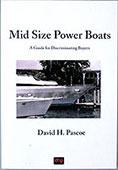






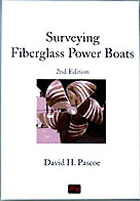
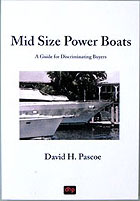
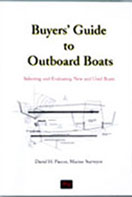

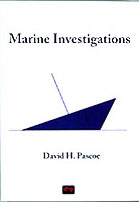
David Pascoe is a second generation marine surveyor in his family who began his surveying career at age 16 as an apprentice in 1965 as the era of wooden boats was drawing to a close.
Certified by the National Association of Marine Surveyors in 1972, he has conducted over 5,000 pre purchase surveys in addition to having conducted hundreds of boating accident investigations, including fires, sinkings, hull failures and machinery failure analysis.
Over forty years of knowledge and experience are brought to bear in following books. David Pascoe is the author of:
In addition to readers in the United States, boaters and boat industry professionals worldwide from nearly 80 countries have purchased David Pascoe's books, since introduction of his first book in 2001.
In 2012, David Pascoe has retired from marine surveying business at age 65.
On November 23rd, 2018, David Pascoe has passed away at age 71.
Biography - Long version